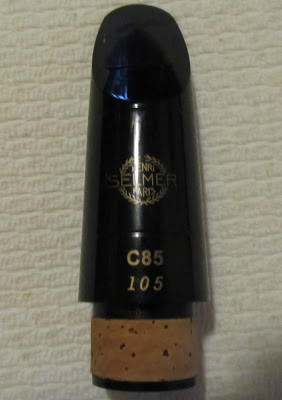SELMER C85
 |
| Selmer C85 105 |
First and foremost, this mouthpiece is loud. But loudness itself isn't really a positive quality unless it's accompanied by other aspects of sound. Depth, flexibility, color spectrum and dynamic range all play their parts and will determine whether it's worth listening in the first place.
What makes this loud "good" and others less successful is the depth, flexibility, and a certain plaintive quality this mouthpiece yields, deep in the tone. There is an inner motion to the sound possible--rather than giving one generic sound, it's multi-layered. It also has a strong edge to the sound, without sacrificing body.
All registers respond immediately to this mouthpiece--it very much feels like a hair-trigger megaphone, freeing the player up to focus on the music rather than any physical challenges. Player who like to exert while playing might find this mouthpiece shouts too much (or that it has too little resistence), but those who like to lay back while getting big results will probably like the feel and response of the C85.
I've read elsewhere on the web that the C85 series was designed specifically for the Selmer 10S/Recital series clarinets, and that they don't work particularly well for pre-10S Selmers. This hasn't been my experience--the C85 works very well on my 1955 Centered Tone and 10S alike.
I can tolerate a pretty wide variety of facings, from fairly close (105) to fairly open (120), and have used both the C85 105 and C85 120 on my horns. They yield similar results, though I prefer the 105 (pictured above is a new 105, purchased as a backup--the one I use more often is a "vintage" 'piece from the early '80s, with an inlaid stamp of the Selmer logo, letters and numbers).
In the grand argument about whether material matters, count me with those who believe it does. These mouthpieces are made from rod rubber, and the sound seems, from both a listening and playing perspective, a bit more defined and harder edged than the molded hard rubber mouthpieces in my collection. Whether it's ultimately material that accounts for this will be debated by those more expert than I am, but my "player's opinion" is that the rubber itself does seem to contribute to that difference.
For those who like Vandoren B40s or B45s, but are looking for a slightly edgier sound, this mouthpiece handles very similarly (with the 120 being the closest facing to those popular Vandorens), and being reasonably priced, it's worth looking into.
